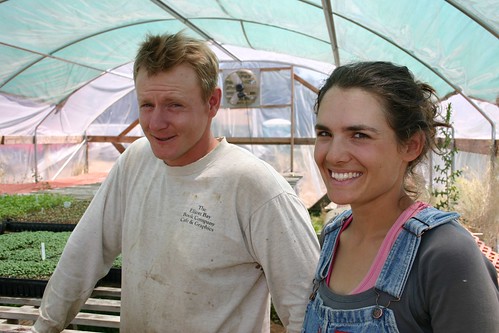
Teamwork can improve virtually any endeavor, from partnering with a neighbor by exchanging butchered meat for hay to feed the rest of the herd or simply sharing a ride to save on gas. The result is usually savings and efficiency.
At USDA, that notion is taken to another level with public-private partnerships that improve economic stability for producers, the financial sector, and a nation that leans heavily on the shoulders of its farmers and ranchers.
For many years, USDA agencies – the Farm Service Agency (FSA), Risk Management Agency (RMA), and Rural Development (RD)—have relied on strong partnerships with industry to produce results for our nation’s rural and agriculturally rich communities.
FSA’s Guaranteed Loan Programs help producers qualify for non-traditional, private loans and encourage lenders to participate by guaranteeing the loan up to 95 percent of the principal and interest. The result for producers is the flexibility of needed ownership and operating funds. The programs benefit the private lender by providing the security of a government-backed guarantee. The programs can also help keep interest rates low by allowing lenders to sell the loans on the secondary market.
“Relationships with private lenders are critical to the success of our Guaranteed Loan Programs,” said FSA Administrator Val Dolcini. “The partnerships we’ve built strengthen our service to farmers and ranchers across the country.”
RMA’s federal crop insurance program is an effective partnership between the government, that ensures the policies are sound, and private insurance companies that sell and service them. The program strengthens the rural economy by providing farmers the guarantee that claims will be paid, through the ability of the private sector to adjust resources quickly and efficiently. The public-private relationship provides reliability for farmers and taxpayers alike, as the Federal government stands behind the insurance products it offers and reinsures the companies that provide claims quickly.
“Crop insurance is built on trust and partnership,” said Brandon Willis, RMA Administrator. “American’s agricultural producers are more secure in their businesses because of what we provide as a team.”
RD’s Water and Environmental Programs utilize interim financing on projects that it funds, allowing local and regional commercial lenders an opportunity to support construction activities, which can result in moving water and wastewater projects to construction more quickly.
Strong public-private partnerships are one of many ways USDA is strengthening the viability of small and disadvantaged farmers and ranchers. “Leveraging federal resources with private sector capital can deliver more projects to more people in more rural communities than either the public or the private sector can do alone,” said Brandon McBride, USDA Rural Utilities Service Administrator, a part of RD.
USDA will continue to seek even more innovative ways to benefit producers through partnership—which is a topic of discussion at an upcoming USDA Annual Agricultural Outlook Forum on February 25 and 26.
On February 25, 2016, a panel of USDA officials and industry representatives will discuss “The Future of Agricultural Credit and Insurance Provision through public/private partnerships” as part of USDA’s 92nd Annual Agricultural Outlook Forum, Feb. 25-26 in Arlington, Virginia.
More information on the forum can be found at 2016 Agricultural Outlook Forum.
